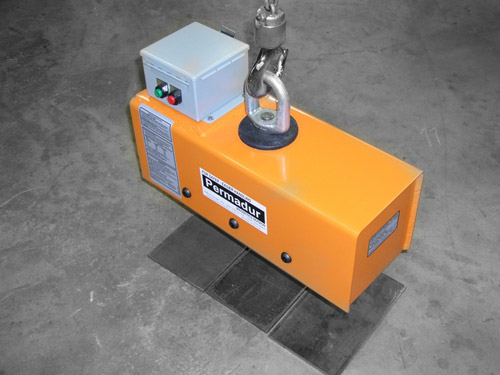Permanent Lifting Magnet
 Integrating control mechanisms in magnet systems, including material handling magnets and permanent lifting magnets, is paramount for their efficiency and effectiveness. As with any technical system, choosing the right control modality can be likened to selecting the appropriate tools for a precision task. We will delineate three primary options: Battery Power, AC Power, and Remote Control.
Integrating control mechanisms in magnet systems, including material handling magnets and permanent lifting magnets, is paramount for their efficiency and effectiveness. As with any technical system, choosing the right control modality can be likened to selecting the appropriate tools for a precision task. We will delineate three primary options: Battery Power, AC Power, and Remote Control.
Battery Power offers unparalleled portability. Such systems, especially those used in permanent lifting magnet setups, can be deployed in environments devoid of direct power infrastructure. This makes them invaluable for field operations or applications demanding frequent relocations in material handling magnets. The absence of cords simplifies the setup, reducing potential operational hazards. However, there are inherent limitations. The energy reservoir of batteries is finite, demanding periodic recharging or replacement. This limitation can introduce operational downtimes, particularly in continuous-duty applications involving material handling magnets. Moreover, longevity and performance consistency can be a concern, especially for high-intensity magnetic operations.
AC Power is the stalwart of continuous and robust operations. Directly tethered to the grid, it ensures a persistent supply, allowing magnet systems, including material handling magnets, to function without concerns about energy depletion. This consistent energy delivery is instrumental for high-powered magnetic systems like permanent lifting magnets demanding sustained operations. Nevertheless, its strengths come with caveats. Direct power tethering can curtail the system's mobility, particularly in material handling setups. While the continuous operation is a strength, the presence of cables can introduce potential tripping hazards. Furthermore, regions prone to electrical interruptions may face disruptions in magnet system operations due to power outages.
Remote Control exemplifies technological sophistication. It facilitates operations from a distance, ensuring safety, especially when proximity poses risks. This is particularly invaluable for intricate setups of material handling magnets where manual adjustments are cumbersome or risky. Some sophisticated remote systems can concurrently manage multiple magnet systems, including permanent lifting magnets, enhancing operational efficiency. However, they introduce their own set of challenges. Signal dependency means any interference or loss of signal can disrupt operations. Power sourcing for the remote device becomes an additional consideration. And, of course, the practical concern of misplacing the remote control can momentarily stall operations.
Key Takeaways
- Battery Power: Offers unmatched portability but demands periodic energy replenishment, especially important for material handling magnets.
- AC Power: Guarantees sustained operations but can limit system mobility, particularly for permanent lifting magnets.
- Remote Control: Provides safety and efficiency but is susceptible to signal disruptions, a consideration for all magnet systems.
The optimal control mechanism for magnet systems, encompassing both permanent lifting magnets and material handling magnets, should be judiciously chosen, considering the specific operational demands and environmental considerations. The balance between efficiency, mobility, and operational continuity will dictate the best fit.
Related Reading
- Different Types of Magnets for Permanent Lifting ApplicationsPermanent lifting magnets are a leading choice for lifting gear because they are safe and effective.
- What Type of Plate Lifting Magnet is Right for Your Business?
- The Differences Between Three Common Lifting Magnets

